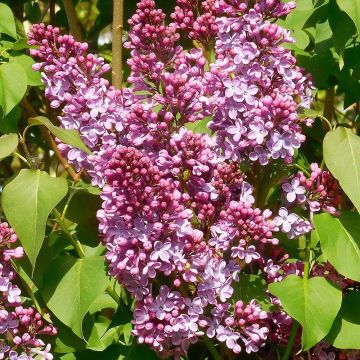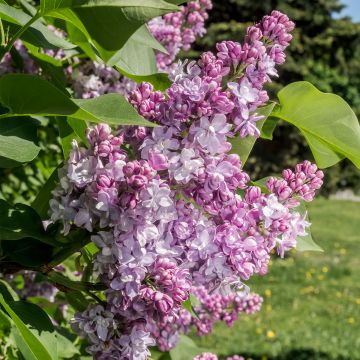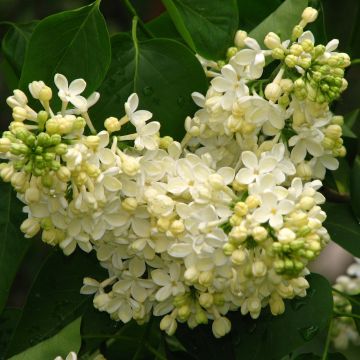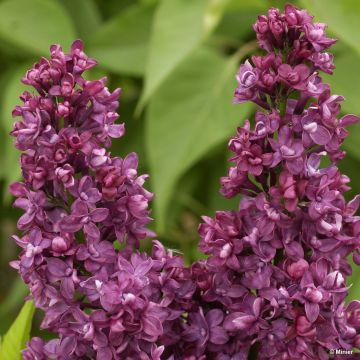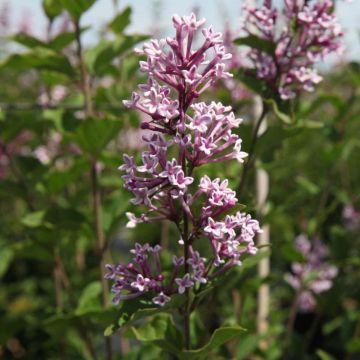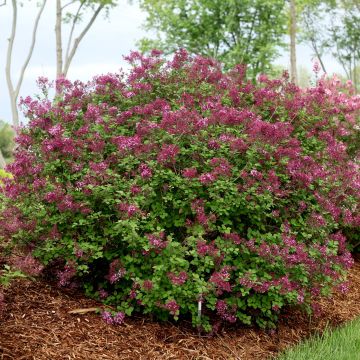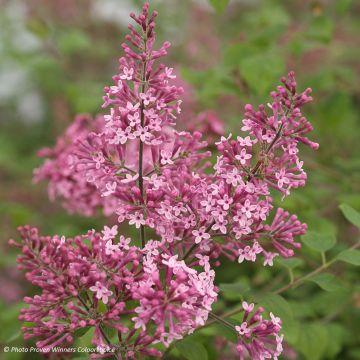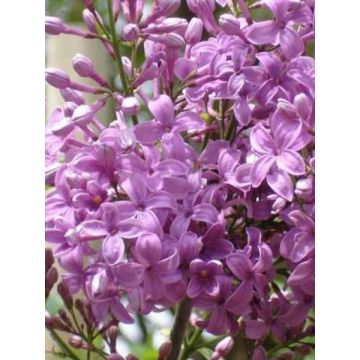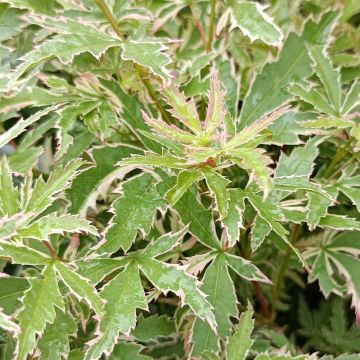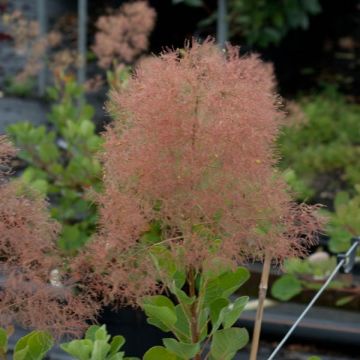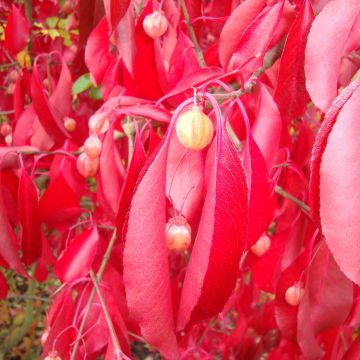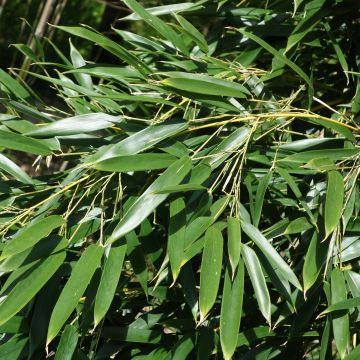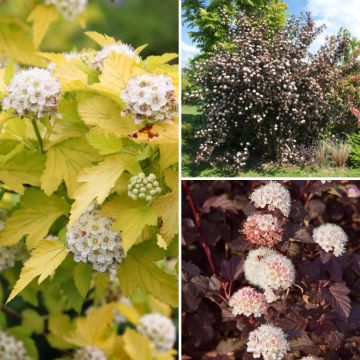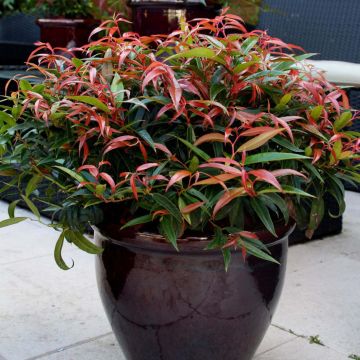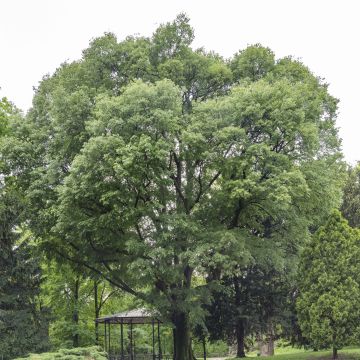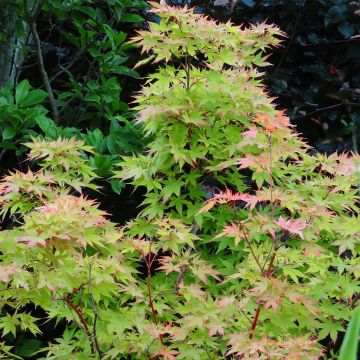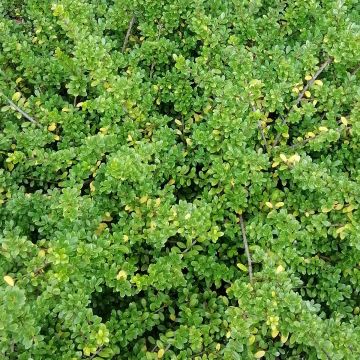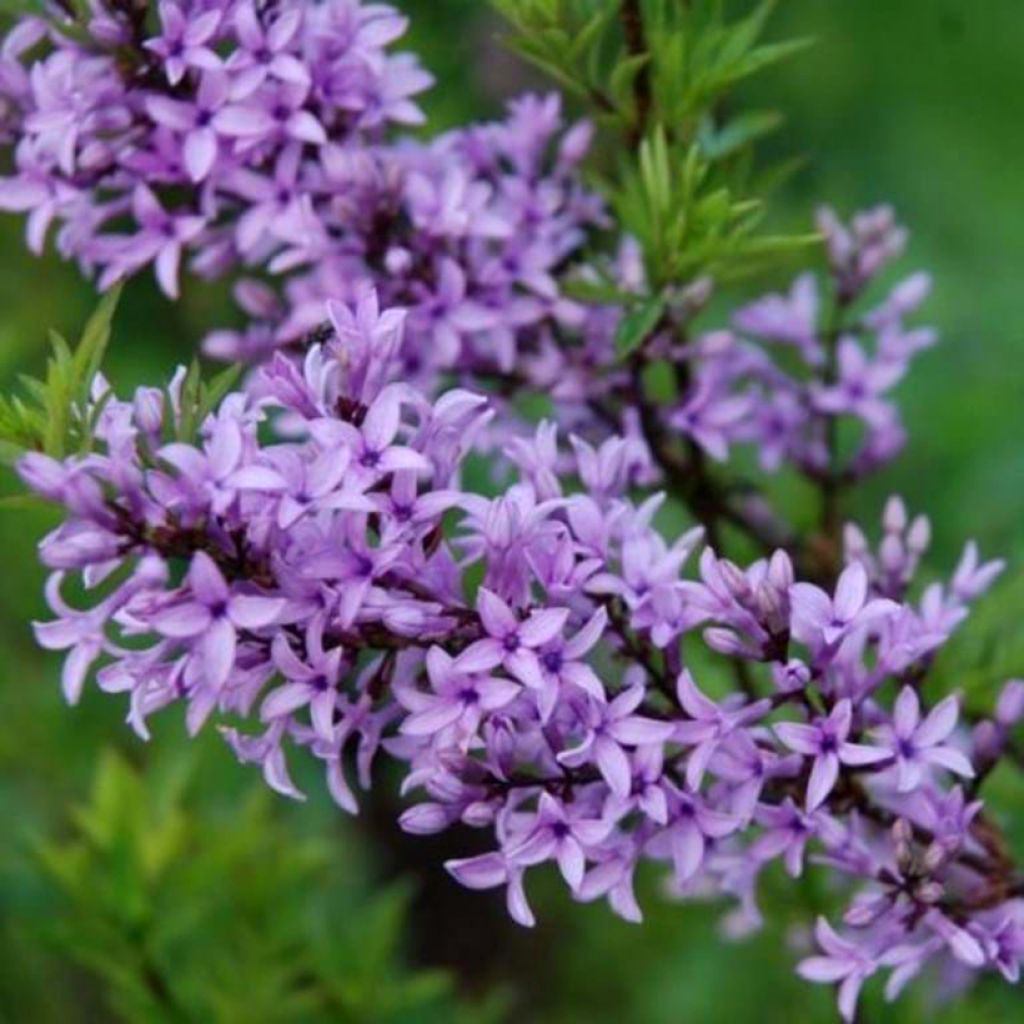

Syringa afghanica - Afghan Lilac
Syringa afghanica - Afghan Lilac
Syringa afghanica
Afghan Lilac
This item cannot be shipped to the selected country
Delivery charge from €5.90
More information
Schedule delivery date,
and select date in basket
This plant carries a 24 months recovery warranty
More information
We guarantee the quality of our plants for a full growing cycle, and will replace at our expense any plant that fails to recover under normal climatic and planting conditions.
From €5.90 for pickup delivery and €6.90 for home delivery
Express home delivery from €8.90.
Does this plant fit my garden?
Set up your Plantfit profile →
Description
Syringa afghanica, Afghan Lilac, is an adorable small lilac that blooms on the rocky and limestone high plateaus of Afghanistan. It is a small bush that is characterised by finely cut foliage, with a light appearance, as well as abundant, early and fragrant spring flowering. These characteristics, combined with a flexible habit, give it a graceful and natural look, quite different from the common lilac. It is also a plant with a robust temperament, adapted to harsh conditions. A botanical lilac to discover!
Syringa afghanica is considered a synonym of Syringa persica. It is very close to botanical and hybrid species such as Syringa protolaciniata, S. laciniata, Syringa pteridifolia, S. filicifolia, S. persica var. pinnata, Syringa x persica 'Laciniata'. Lilacs belong to the olive family.
This bush has a bushy, flexible, spreading habit, supported by slender, slightly trailing branches. Its growth is rather slow, reaching about 1.50m in height and 1m in width at maturity. Its young branches are reddish-brown. This lilac has deciduous, bright green foliage. The leaves are pinnate, composed of 3 to 9 thin, elliptical leaflets. Flowering usually starts at the end of April, earlier or later depending on the climate. The inflorescences are pyramid-shaped thyrses, light and airy, pleasantly fragrant, about 7-8 cm long. They are composed of small, single, delicate, mauve flowerswith a pinkish hue, marked with dark violet in the throat. These inflorescences appear at the ends of the previous year's shoots. Their fragrance evoking violets is more complex and refined than that of our common lilac Syringa vulgaris.
Fragrance, flowering, childhood memories or even a symbol of a significant event, everyone has a good reason to love lilacs, as endearing as they are unpretentious. The Afghan Lilac finds a place in gardens of all sizes, or even on a terrace or balcony, planted in a large pot. Perfectly hardy, easy to grow in ordinary, well-drained soil, in cold or dry regions, not demanding, it adapts to all climates. It is a major element for creating a scented garden, its flowering preceding that of common lilacs which may overshadow its more delicate blooms. It can also be planted in large borders, in groups, as a standalone specimen or as a small informal hedge mixed with other species (Mock Oranges, flowering currants, forsythias, Japanese quinces, shrub roses, Deutzias...). Its delightfully fragrant clusters are appreciated in spring bouquets, alongside the first garden irises, early peonies, tulips, bellflowers, and florist's ranunculus.
Report an error about the product description
Syringa afghanica - Afghan Lilac in pictures
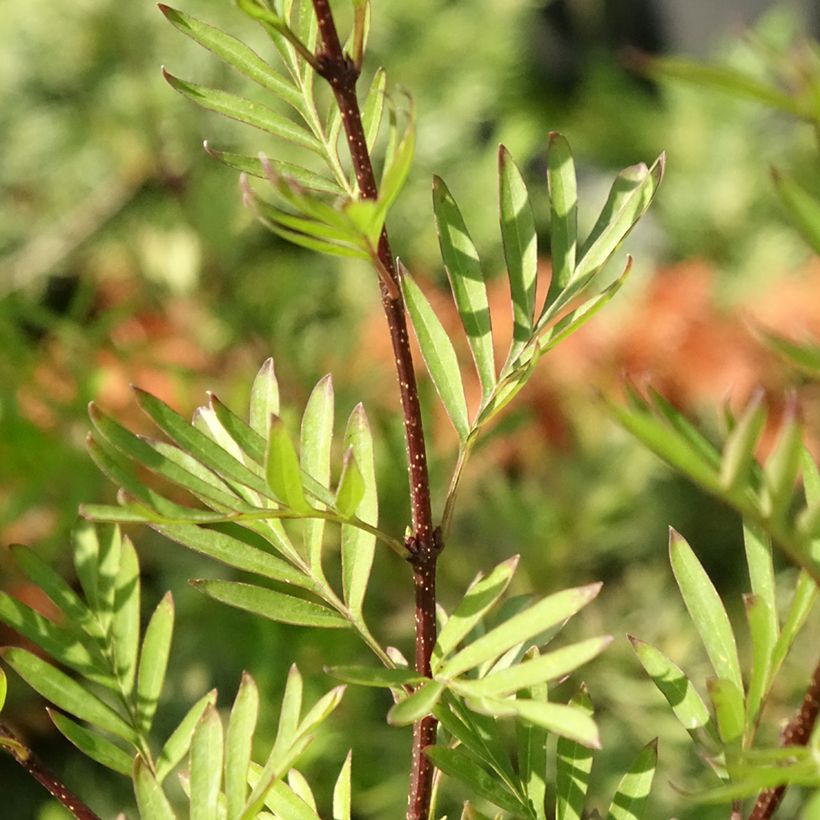

Plant habit
Flowering
Foliage
Botanical data
Syringa
afghanica
Oleaceae
Afghan Lilac
Syringa persica
Central Asia
Other Syringa - Lilac
Planting and care
Syringa afghanica can be planted from November to March and from June to September. It is not very demanding in terms of soil, but it requires well-drained soil that is not too compact and does not become waterlogged in winter. It tolerates limestone well. Once established, it can withstand summer drought and winter frost (down to -20°C). It is recommended to provide a complete fertiliser every year at the start of the growing season. It is best to plant it in full sun (or in light shade in hot climates), as its flowering is better when it receives maximum light and when winters are well contrasted. It is useful to remove faded inflorescences after flowering to prevent fruiting, which is not interesting and exhausts the plant. This will promote a more abundant flowering the following year. This variety flowers on the previous year's shoots. Pruning is not obligatory. Avoid severe pruning that limits the spring flowering.
Planting period
Intended location
Care
This item has not been reviewed yet - be the first to leave a review about it.
Striking foliage shrubs
Haven't found what you were looking for?
Hardiness is the lowest winter temperature a plant can endure without suffering serious damage or even dying. However, hardiness is affected by location (a sheltered area, such as a patio), protection (winter cover) and soil type (hardiness is improved by well-drained soil).

Photo Sharing Terms & Conditions
In order to encourage gardeners to interact and share their experiences, Promesse de fleurs offers various media enabling content to be uploaded onto its Site - in particular via the ‘Photo sharing’ module.
The User agrees to refrain from:
- Posting any content that is illegal, prejudicial, insulting, racist, inciteful to hatred, revisionist, contrary to public decency, that infringes on privacy or on the privacy rights of third parties, in particular the publicity rights of persons and goods, intellectual property rights, or the right to privacy.
- Submitting content on behalf of a third party;
- Impersonate the identity of a third party and/or publish any personal information about a third party;
In general, the User undertakes to refrain from any unethical behaviour.
All Content (in particular text, comments, files, images, photos, videos, creative works, etc.), which may be subject to property or intellectual property rights, image or other private rights, shall remain the property of the User, subject to the limited rights granted by the terms of the licence granted by Promesse de fleurs as stated below. Users are at liberty to publish or not to publish such Content on the Site, notably via the ‘Photo Sharing’ facility, and accept that this Content shall be made public and freely accessible, notably on the Internet.
Users further acknowledge, undertake to have ,and guarantee that they hold all necessary rights and permissions to publish such material on the Site, in particular with regard to the legislation in force pertaining to any privacy, property, intellectual property, image, or contractual rights, or rights of any other nature. By publishing such Content on the Site, Users acknowledge accepting full liability as publishers of the Content within the meaning of the law, and grant Promesse de fleurs, free of charge, an inclusive, worldwide licence for the said Content for the entire duration of its publication, including all reproduction, representation, up/downloading, displaying, performing, transmission, and storage rights.
Users also grant permission for their name to be linked to the Content and accept that this link may not always be made available.
By engaging in posting material, Users consent to their Content becoming automatically accessible on the Internet, in particular on other sites and/or blogs and/or web pages of the Promesse de fleurs site, including in particular social pages and the Promesse de fleurs catalogue.
Users may secure the removal of entrusted content free of charge by issuing a simple request via our contact form.
The flowering period indicated on our website applies to countries and regions located in USDA zone 8 (France, the United Kingdom, Ireland, the Netherlands, etc.)
It will vary according to where you live:
- In zones 9 to 10 (Italy, Spain, Greece, etc.), flowering will occur about 2 to 4 weeks earlier.
- In zones 6 to 7 (Germany, Poland, Slovenia, and lower mountainous regions), flowering will be delayed by 2 to 3 weeks.
- In zone 5 (Central Europe, Scandinavia), blooming will be delayed by 3 to 5 weeks.
In temperate climates, pruning of spring-flowering shrubs (forsythia, spireas, etc.) should be done just after flowering.
Pruning of summer-flowering shrubs (Indian Lilac, Perovskia, etc.) can be done in winter or spring.
In cold regions as well as with frost-sensitive plants, avoid pruning too early when severe frosts may still occur.
The planting period indicated on our website applies to countries and regions located in USDA zone 8 (France, United Kingdom, Ireland, Netherlands).
It will vary according to where you live:
- In Mediterranean zones (Marseille, Madrid, Milan, etc.), autumn and winter are the best planting periods.
- In continental zones (Strasbourg, Munich, Vienna, etc.), delay planting by 2 to 3 weeks in spring and bring it forward by 2 to 4 weeks in autumn.
- In mountainous regions (the Alps, Pyrenees, Carpathians, etc.), it is best to plant in late spring (May-June) or late summer (August-September).
The harvesting period indicated on our website applies to countries and regions in USDA zone 8 (France, England, Ireland, the Netherlands).
In colder areas (Scandinavia, Poland, Austria...) fruit and vegetable harvests are likely to be delayed by 3-4 weeks.
In warmer areas (Italy, Spain, Greece, etc.), harvesting will probably take place earlier, depending on weather conditions.
The sowing periods indicated on our website apply to countries and regions within USDA Zone 8 (France, UK, Ireland, Netherlands).
In colder areas (Scandinavia, Poland, Austria...), delay any outdoor sowing by 3-4 weeks, or sow under glass.
In warmer climes (Italy, Spain, Greece, etc.), bring outdoor sowing forward by a few weeks.


































